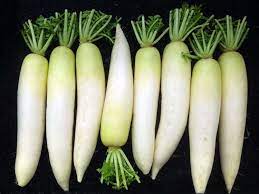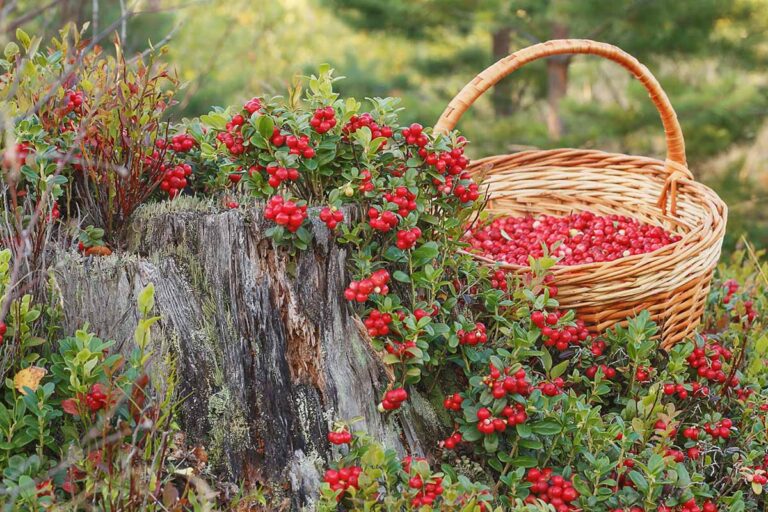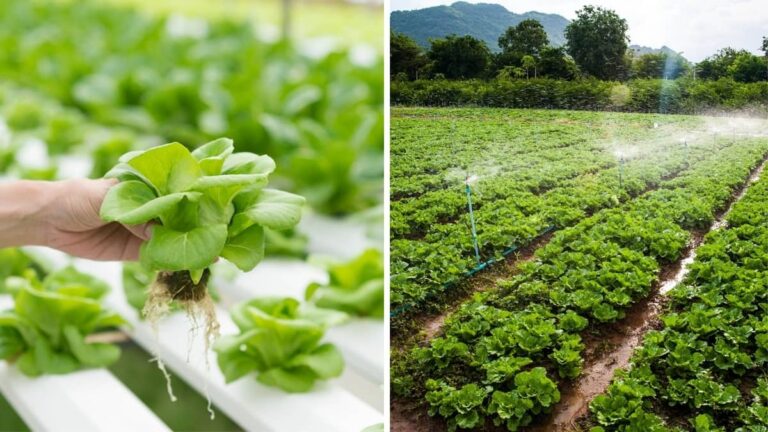Tall Tickseed Cultivation: Coreopsis Tripteris Care
Table of Contents
Growing Conditions for Tall Tickseed
Tall tickseed, scientifically known as Coreopsis tripteris, is a beautiful flowering plant that adds a touch of elegance to any garden. To ensure the best growth and blooming potential for your tall tickseed, it is essential to provide the right growing conditions. This plant thrives in full sun exposure, receiving a minimum of 6 hours of direct sunlight daily. Additionally, tall tickseed prefers well-draining soil that is moderately fertile and somewhat dry, making it tolerant to drought conditions once established.
In terms of temperature, tall tickseed is hardy in USDA zones 3 to 9, showcasing its versatility in various climates. It can withstand cold winters and hot summers, making it a resilient choice for gardeners in different regions. Proper air circulation is also crucial for preventing diseases, so spacing the plants about 18 to 24 inches apart is recommended to allow for adequate airflow. By ensuring these optimal growing conditions, you can enjoy a flourishing display of tall tickseed in your garden throughout the growing season.

Soil Preparation for Coreopsis Tripteris
To ensure the optimal growth of Coreopsis tripteris, it is essential to prepare the soil correctly. This perennial plant thrives in well-draining soil with a slightly acidic to neutral pH level ranging from 6.0 to 7.0. Before planting, amend the soil with organic matter such as compost or well-rotted manure to improve its structure and fertility. Incorporating perlite or sand can also aid in enhancing drainage, preventing waterlogging that may harm the plant’s roots. Additionally, a soil test can help determine if any specific nutrients are lacking, allowing for targeted amendments to create a balanced growing environment for Coreopsis tripteris.
Avoid heavy clay soils that retain excess moisture, as they can lead to root rot and other issues detrimental to Coreopsis tripteris. Loosen the soil to a depth of at least 12 inches to promote root development and enable the plant to access nutrients more efficiently. Consider mulching around the base of the plant to regulate soil temperature, conserve moisture, and suppress weed growth. By taking the time to prepare the soil adequately, you set the stage for healthy growth and vibrant blooms from your Coreopsis tripteris plants.
Here are the steps for soil preparation when planting Coreopsis tripteris (Tall Coreopsis):
| Step | Description |
| 1. Site Selection | Choose a sunny location for planting. Full sun is ideal, but it can tolerate partial shade. |
| 2. Soil Preparation | Prepare the soil by ensuring it is well-drained. Amend heavy clay soil with organic matter. |
| 3. Soil pH | Aim for a slightly acidic to neutral pH (around 6.0 to 7.0). |
| 4. Clear the Area | Remove weeds, rocks, and debris from the planting area. |
| 5. Dig Holes | Dig holes for each plant, spaced 2-3 feet apart. |
| 6. Planting Depth | Plant at the same depth as the nursery container. |
| 7. Backfill Soil | Fill in the hole with soil, gently firming it around the roots. Water thoroughly after planting. |
| 8. Mulch | Apply a layer of organic mulch around the base of the plants to retain moisture and suppress weeds. |
| 9. Watering | Keep the soil consistently moist during the establishment period. Once established, it tolerates drought. |
| 10. Maintenance | Regularly deadhead spent flowers to encourage continuous blooming. Divide clumps every 2-3 years. |
Remember that Tall Coreopsis is native to the Eastern United States (zones 3-8) and provides beautiful yellow daisy-like flowers.
Planting Tall Tickseed in the Garden
When planting tall tickseed in your garden, it is important to choose a location that receives full sun to partial shade. Tall tickseed, also known as Coreopsis tripteris, thrives in well-draining soil and benefits from regular moisture during its growing season. Before planting, prepare the soil by incorporating organic matter such as compost to improve soil fertility and drainage.
When it comes to planting tall tickseed, spacing is key to allow for proper air circulation and growth. Dig a hole that is slightly wider and as deep as the root ball of the plant. Gently place the plant in the hole, ensuring it sits at the same level as it was in the container. Backfill the hole with soil, compacting it lightly around the base of the plant. Water thoroughly after planting to help the roots establish effectively in their new environment.
Watering Needs of Coreopsis Tripteris
Coreopsis tripteris, also known as Tall Tickseed, is a resilient and easy-to-care-for plant that thrives in a variety of conditions. When it comes to watering this beautiful flower, it is essential to strike a balance to ensure its optimal growth and health. Overwatering can lead to root rot and other issues, while underwatering can stunt its development and flowering potential.
To meet the watering needs of Coreopsis tripteris, it is advisable to water deeply but infrequently. This approach encourages the plant’s roots to grow deeply into the soil, making it more resilient during dry periods. Aim to water the plant when the top inch of soil feels dry to the touch, typically once a week depending on the weather conditions. However, it is crucial to adjust the frequency based on rainfall and the plant’s individual requirements to prevent waterlogging the soil. By providing consistent and appropriate moisture levels, you can support the health and vitality of your Tall Tickseed plants.
Fertilizing Tall Tickseed Plants
To ensure optimal growth and blooming of tall tickseed plants, proper fertilization is crucial. These plants generally thrive in well-draining soil that is rich in nutrients. When fertilizing tall tickseed plants, it is recommended to use a balanced fertilizer with equal parts nitrogen, phosphorus, and potassium (N-P-K). A slow-release fertilizer can be beneficial as it provides a steady supply of nutrients over time, promoting steady and healthy growth. Avoid over-fertilizing, as this can lead to excessive foliage growth at the expense of flower production.
Organic fertilizers, such as compost or manure, can also be beneficial for tall tickseed plants as they provide a natural source of nutrients and help improve soil structure. Applying a layer of organic mulch around the base of the plants can further help retain moisture and nutrients in the soil, promoting overall plant health. Regularly monitoring the condition of the plants and adjusting the fertilization regimen as needed can help ensure that tall tickseed plants thrive and produce an abundance of vibrant flowers.
Pruning and Deadheading Coreopsis Tripteris
When it comes to maintaining the health and appearance of your Coreopsis tripteris, pruning and deadheading are essential tasks that should not be overlooked. Pruning, the selective removal of branches or stems, helps promote plant growth and vigor by allowing for better air circulation and light exposure. Deadheading, on the other hand, involves removing spent flowers to encourage continuous blooming and prevent seeding.
To prune your Coreopsis tripteris effectively, start by inspecting the plant for any dead, damaged, or crossed branches. Use sharp and clean pruning shears to make clean cuts at a 45-degree angle just above a leaf node or lateral branch. Avoid cutting into the woody stems as this can lead to disease or pest infestations. Deadheading is a simpler task that can be done by pinching off the faded flowers with your fingers or using pruners. Be sure to deadhead regularly throughout the blooming season to promote prolonged flowering and prevent self-seeding.

Dealing with Pests on Tall Tickseed
Tall Tickseed plants are generally hardy and resistant to many pests; however, there are a few common culprits that gardeners may encounter. One such pest is the aphid, which can be identified by its small size and tendency to cluster on new growth. These sap-sucking insects can weaken the plant and cause distortion of leaves if not addressed promptly. Another potential pest is the spider mite, which is known for creating fine webbing on the plant and causing yellow speckling on leaves as it feeds. Regularly inspecting the foliage of Tall Tickseed plants can help detect these pests early for effective control measures.
To combat aphids and spider mites on Tall Tickseed plants, consider using natural predators like ladybugs or lacewings, which feed on these pests and help keep their populations in check. Alternatively, a solution of water and mild soap can be sprayed on the affected plants to deter these insects. Additionally, maintaining good garden hygiene by removing any debris or weeds that can harbor pests can help prevent infestations. By staying vigilant and implementing these integrated pest management strategies, gardeners can protect their Tall Tickseed plants from common pests and ensure healthy growth and bloom.
Here’s a tabular summary of the pests that may affect Tall Tickseed (Coreopsis tripteris):
| Pest | Description |
| Aster Yellows | A disease caused by phytoplasma, resulting in yellowing and stunted growth of the plant. |
| Alternaria Leaf Spot | A fungal disease causing dark spots on leaves. |
| Powdery Mildew | A common fungal infection that appears as white powdery patches on leaves. |
| Cercospora Leaf Spot | Another fungal disease causing circular brown spots on leaves. |
| Aphids | Small insects that suck sap from the plant, potentially distorting growth and spreading diseases. |
Remember to monitor your Tall Tickseed for signs of these pests and take appropriate measures to manage them. Regular inspection and prompt action can help keep your plants healthy.
Preventing Diseases in Coreopsis Tripteris
To prevent diseases in Coreopsis Tripteris, it is crucial to start with healthy plants from reputable sources. Inspect the plants carefully before purchasing to ensure they are free from any signs of disease or pests. Additionally, provide adequate spacing between plants to promote good air circulation, which can help prevent the development and spread of diseases.
Moreover, it is essential to water Coreopsis Tripteris at the base of the plant and avoid getting the foliage wet. Watering in the morning allows excess moisture to evaporate during the day, reducing the risk of fungal diseases. Proper sanitation practices, such as removing and disposing of any dead or diseased plant material, can also help prevent the spread of diseases within the garden. By implementing these preventive measures, you can maintain the health and vigor of your Coreopsis Tripteris plants.
Supporting Tall Tickseed Plants
One crucial aspect of cultivating tall tickseed plants is providing adequate support to help them thrive and reach their full potential in the garden. Due to their tall and slender stems, these plants can benefit from additional structural assistance to prevent them from bending or drooping under their own weight. This is especially important in regions that experience strong winds or heavy rainfall, which can put stress on the plants and potentially damage them.
Supporting tall tickseed plants can be achieved using various methods, such as installing stakes or plant cages around individual stems or using trellises to create a framework for the plants to grow against. These support structures not only help maintain the plant’s upright posture but also enhance air circulation around the foliage, reducing the risk of diseases such as powdery mildew. By proactively implementing support for tall tickseed plants, gardeners can ensure a healthier and more visually appealing garden display that lasts throughout the growing season.
To support Tall Tickseed (Coreopsis tripteris) and prevent bending, consider the following steps:
| Aspect | Recommendations |
| Staking | Use stakes to support tall plants. Staking helps protect them from wind and heavy rain, preventing bending or breaking. |
| Deadheading | Regularly remove spent flowers (deadhead) to encourage continuous blooming and maintain an upright growth habit. |
| Light Feed | Provide a light feed with balanced fertilizer during the growing season. |
| Division | Divide the rootball in spring (for half-hardy perennials) or autumn (for hardy perennials) to rejuvenate the plant. |
Remember that proper care and support will keep your Tall Tickseed healthy and thriving.
Dividing Coreopsis Tripteris
When it comes to dividing Coreopsis tripteris, it’s essential to ensure the continued health and vigor of these beautiful plants in your garden. This process is typically done every 2-3 years to prevent overcrowding and rejuvenate the plant for optimal growth.
To divide Coreopsis tripteris, start by digging up the entire plant in early spring or fall when it’s not in its active growing phase. Gently separate the clumps into smaller sections using a sharp knife or garden spade, making sure each division has healthy roots and shoots. Replant these divisions in prepared soil, ensuring they are placed at the same depth as they were originally growing. Water the newly divided plants thoroughly to help them establish and continue to thrive in their new locations.
Overwintering Tall Tickseed
When preparing tall tickseed plants for the winter months, it is important to consider their specific needs to help them survive and thrive during this period of dormancy. One key aspect to focus on is providing adequate protection from extreme temperatures. In regions with harsh winters, consider adding a layer of mulch around the base of the plants to insulate the roots and help retain moisture. This layer of mulch can also act as a protective barrier against freezing temperatures, preventing frost from damaging the plant tissues.
Another crucial step in overwintering tall tickseed is to ensure proper drainage to prevent waterlogging, which can lead to root rot. Before the frost sets in, make sure the soil is well-draining to avoid excessive moisture retention. Additionally, cutting back the plant to about six inches above the ground after the first fall frost can help promote healthy regrowth in the following spring. By taking these precautions and providing the necessary care, you can help your tall tickseed plants survive the winter and come back strong and vibrant in the next growing season.
Propagating Coreopsis Tripteris
Coreopsis tripteris can be propagated through division or seeds. Division is best done in the spring when new growth is just starting to emerge. Dig up the plant, separate the clumps into smaller sections with roots attached, and replant them in well-draining soil. Water thoroughly after planting to help the divisions establish themselves.
Alternatively, you can propagate coreopsis tripteris from seeds. Collect ripe seed heads in the fall, dry them out, and then store them in a cool, dry place until ready to sow. In early spring, sow the seeds thinly on the surface of moist seed-starting mix and lightly cover with a thin layer of soil. Keep the soil consistently moist until germination occurs, which usually takes around 10-14 days.
Companion Planting with Tall Tickseed
When considering companion planting with tall tickseed (Coreopsis tripteris), it’s important to choose suitable plants that will complement its growth habits and requirements. One excellent choice is the purple coneflower (Echinacea purpurea), a perennial that shares similar growing conditions with tall tickseed. Both plants prefer full sun and well-drained soil, making them compatible companions in the garden.
Another great companion for tall tickseed is the black-eyed Susan (Rudbeckia hirta), known for its vibrant yellow flowers that bloom alongside the tall tickseed’s cheerful blooms. These two plants not only add color and visual interest to the garden but also attract pollinators, creating a thriving ecosystem. By pairing tall tickseed with these compatible plants, you can create a harmonious and visually appealing garden bed that supports biodiversity and enhances the overall beauty of your landscape.

Landscaping Ideas with Coreopsis Tripteris
Coreopsis tripteris, commonly known as Tall Tickseed, is a stunning addition to any garden landscape. With its tall, slender stems topped with bright yellow flowers, this plant can bring a pop of color and texture to your outdoor space. One way to incorporate Coreopsis tripteris into your landscaping is by planting it in clusters along borders or pathways. The vertical nature of the plant can provide a nice backdrop for shorter plants in front, creating a dynamic visual effect.
Another landscaping idea with Coreopsis tripteris is to mix it with other native perennials for a naturalistic look. Pairing it with plants like black-eyed Susans, coneflowers, and ornamental grasses can create a harmonious and low-maintenance garden bed. This combination not only adds diversity to your landscape but also attracts beneficial pollinators such as bees and butterflies, enhancing the overall ecosystem of your garden.

Harvesting Seeds from Tall Tickseed
Once the tall tickseed plants have bloomed and the flowers have faded, it’s time to consider harvesting the seeds for future propagation. To collect the seeds, wait until the flower heads have dried out completely on the plant. Gently remove the dried flower heads and place them in a paper bag. Shake the bag to release the seeds, which are small and dark in color. Discard any chaff or debris, and store the seeds in a cool, dry place in an airtight container until you are ready to plant them next season.
Harvesting seeds from tall tickseed not only allows you to expand your garden but also ensures the preservation of this beautiful plant for years to come. By collecting and storing the seeds properly, you can continue to enjoy the vibrant blooms of tall tickseed in your garden season after season. Remember to label the containers with the seed variety and date of collection for easy identification and organization.
To Know More About Tall Tickseed Cultivation and Care, Watch This Video!
When is the best time to harvest seeds from tall tickseed?
The best time to harvest seeds from tall tickseed is in the late summer or early fall, once the seed heads have dried out on the plant.
How do I know if the seeds from tall tickseed are ready to be harvested?
The seed heads will turn brown and dry out when they are ready to be harvested. You can gently shake the seed heads to see if the seeds easily come out.
How should I store the harvested seeds from tall tickseed?
Store the harvested seeds in a cool, dry place in a paper bag or envelope. Make sure to label the container with the date and plant variety.
Can I directly sow the harvested seeds from tall tickseed in the garden?
Yes, you can directly sow the harvested seeds from tall tickseed in the garden in the fall or early spring. Make sure to keep the soil consistently moist until the seeds germinate.
How long do tall tickseed seeds remain viable for planting?
Tall tickseed seeds can remain viable for planting for up to 3-5 years if stored properly in a cool, dry place. It’s best to use fresh seeds for optimal germination rates.





